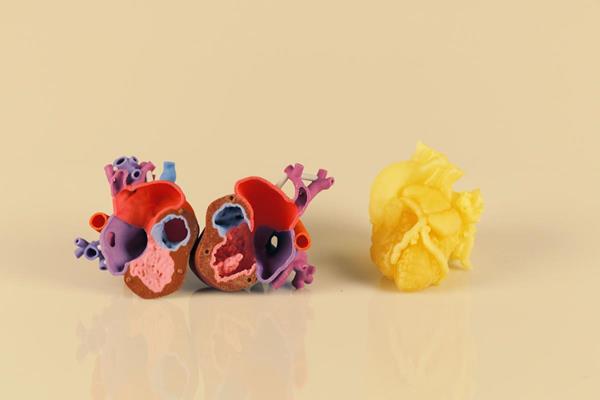Healthcare organizations that use 3D Systems’ anatomical modeling service will have some new material options. The company has extended the service to include a pliable MultiJet Printing (MJP) material for patient-specific 3D modeling and printing service.
The modeling service aids in surgical procedure planning for patients with critical congenital heart defects.

MJP is an inkjet printing process that uses a piezo printhead technology with a photocurable plastic resin or casting wax materials.
The cardiac modeling and printing service uses radiographic imaging data to create a digital copy of the patient’s heart that can be printed using ColorJet Printing or MultiJet Printing. While the CJP model can color code heart structures to assist with communication during physician consultations, new MJP models can be used in surgical rehearsal because the pliable material mimic’s the texture of the actual heart and can be cut, sutured and grafted.
“We have been collaborating with 3D Systems on the design and printing of cardiac 3D models for a few years now,” said Shafkat Anwar, MD, Cardiology Director, Cardiac MRI Program, The Heart Center, St. Louis Children’s Hospital, Assistant Professor of Pediatrics, Division of Pediatric Cardiology, Washington University in St. Louis School of Medicine. “Our cardiothoracic surgeons routinely use 3D printed models for precise pre-surgical planning, and have found these models helpful for complex cases. The models are also regularly used in our institution for trainee education and for counseling patients and their families. More recently, we have incorporated flexible 3D printed models into our pre-surgical ‘dataset’ and use both the flexible and rigid multicolor models for surgical planning. We have been consistently impressed by the high level of technical expertise of 3D Systems’ team, and the surgical models have proven accurate to the anatomy encountered in the operating room.”
You can see a video of the models below.
Source: 3D Systems
About the Author
Follow Robotics 24/7 on Linkedin
Article topics
Email Sign Up
















